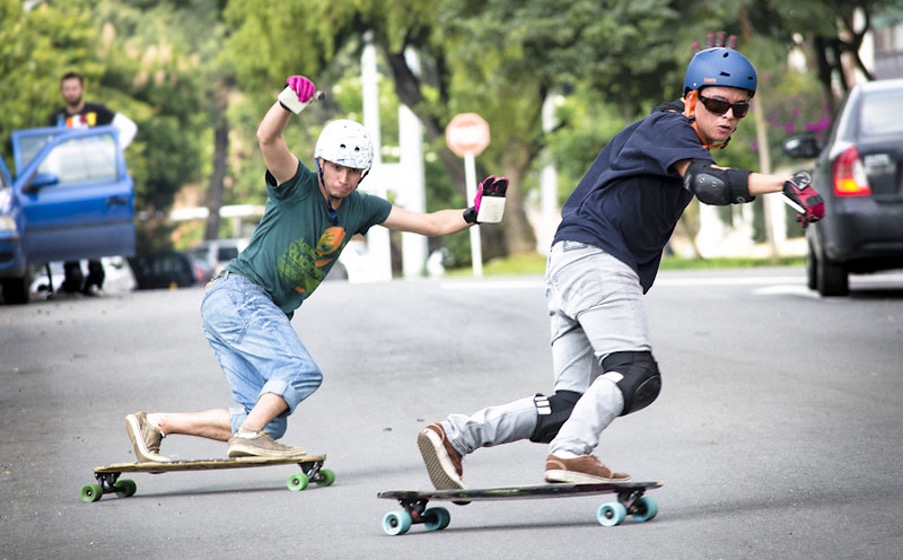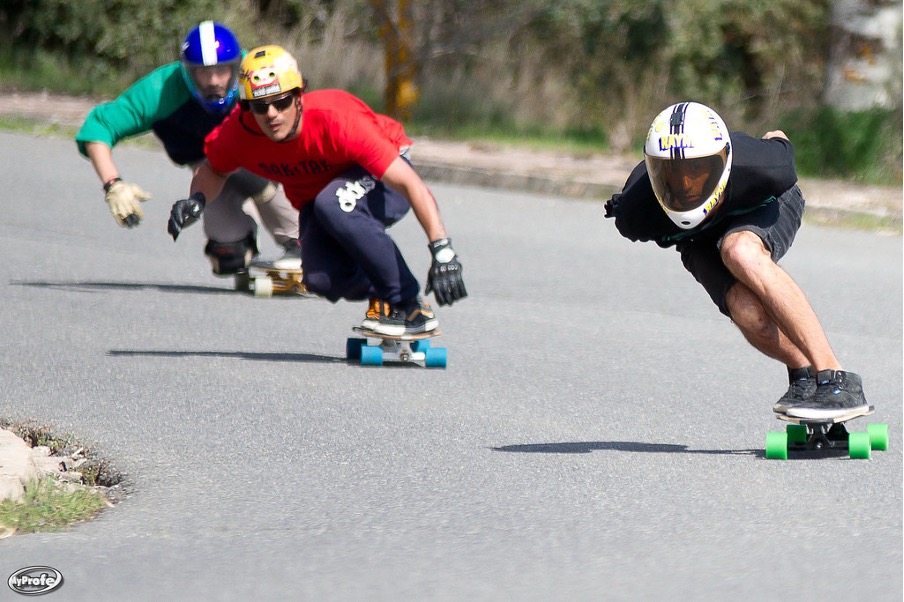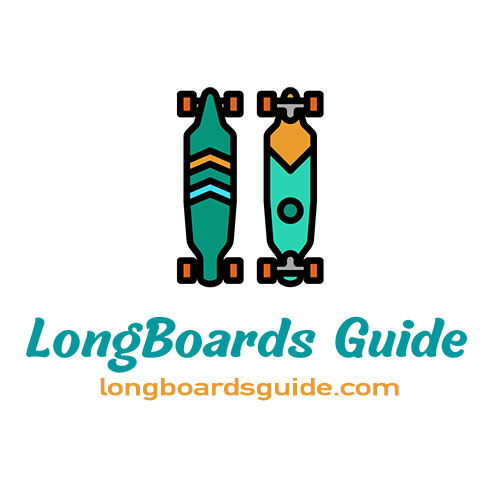Nothing is more frustrating than hitting a trick and having your skateboard come to a complete stop.
Wheel bite may happen to anyone who rides on wheels, whether on roller skates or a skateboard. It isn’t an issue for technical skating.
How to prevent longboard wheel bite? The article will explain this issue and guide you in helpful ways to stop it. Let’s get started!
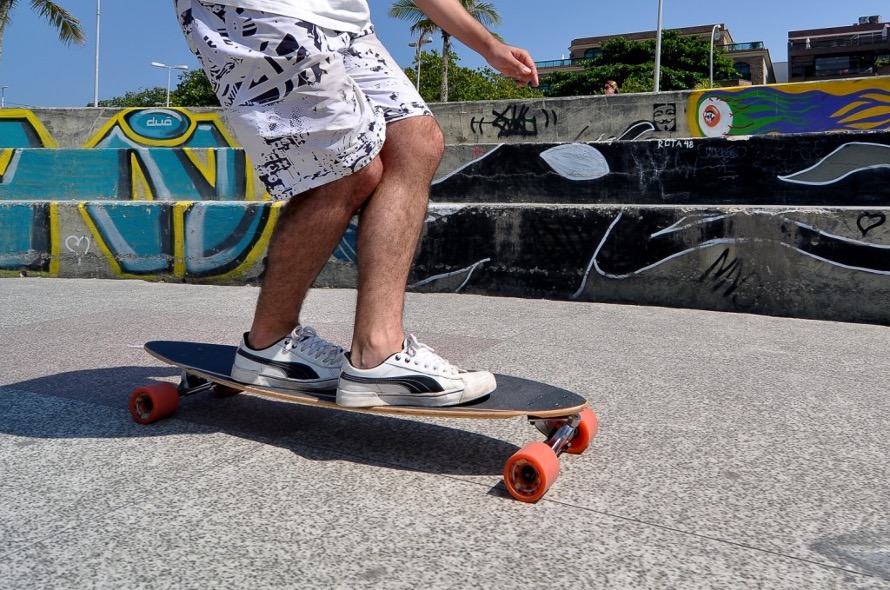
What Is Wheel Bite?
Before learning some valuable techniques to stop wheel bite on a longboard, it’s best to understand some basics of this phenomenon.
What is wheel bite? When the wheels come into contact with the board, this problem will happen.
This phenomenon might occur whenever you turn or lean too much, causing your longboard to halt and propelling you ahead.
Many skaters sustain injuries as a result of a wheel bite. Since the halt is so abrupt, you may wind yourself tumbling awkwardly forward.
Some people have escaped with only a few bruises, while others have had severe injuries such as skinned palms.
This issue is sometimes a true mood killer for skaters. As a result, skaters aim to prevent it as much as possible.
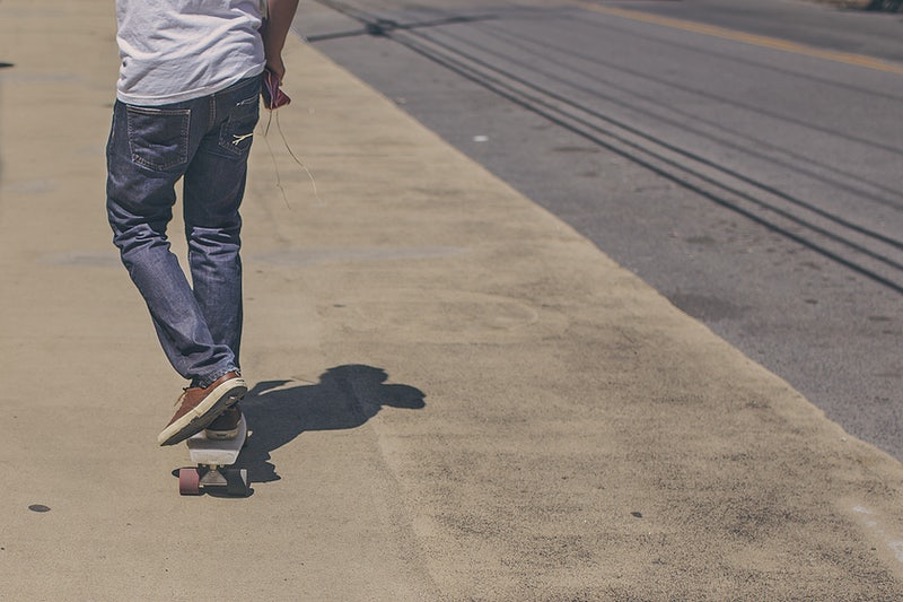
Why Does A Longboard Wheel Bite Happen?
There are a variety of reasons for this incident in the skater community. Below are the primary causes to consider:
Loose Trucks
Trucks are the components that connect the deck’s top to the wheels on skateboards or roller skates.
The more freely trucks are coupled to a board, the more they may move beneath the deck, making steering more sensitive.
On the other hand, Loose trucks allow the board deck to tilt and roll more freely, resulting in more responsive steering.
When a board deck dips too far, it collides with the wheel, resulting in a rapid, unfavorable halt called wheel bite.
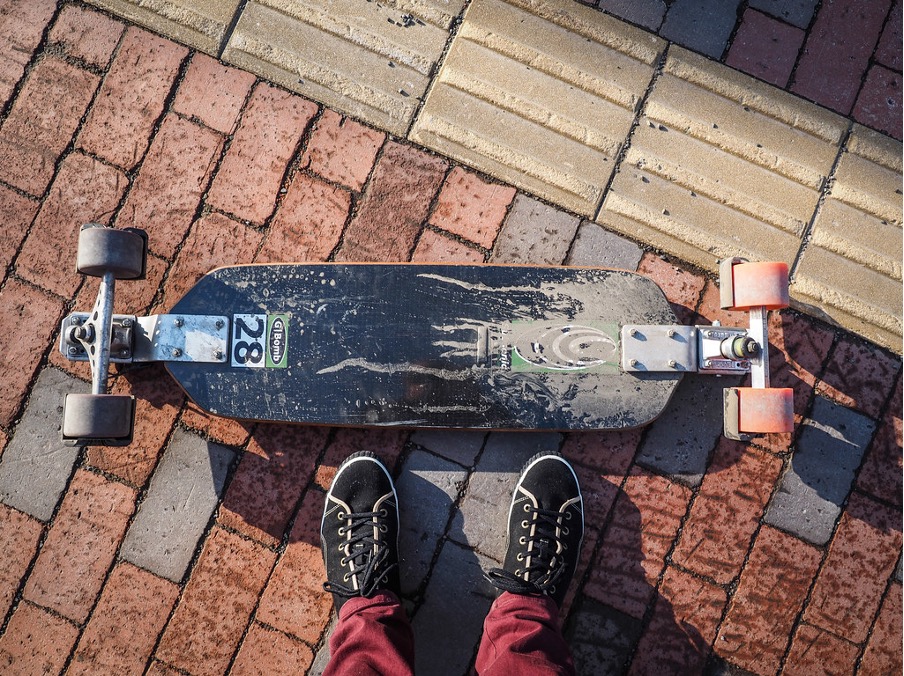
Too-Large Wheels
The wheels are too large for the substructure if you can’t make the trucks much tighter and still suffer wheel biting.
There is so much space underneath your deck for your wheels to move in a typical skateboard setup.
This problem occurs when there isn’t enough room under the deck.
Larger wheels require more space, increasing the wheel bite risk and lowering clearance.
Old Bushings
Skateboard trucks have bushings and plastic bits that cushion the metal sections and absorb shock.
The functional elements of a skateboard are cushioned by bushings, which absorb a significant amount of impact.
As a result, they’re among the first parts of your board to deteriorate.
If bushings wear out, they don’t push as forcefully on the other parts of your trucks, causing them to loosen up.
If the old bushings are overly soft, it will be more difficult to properly tighten your trucks, increasing the risk of wheel bite.
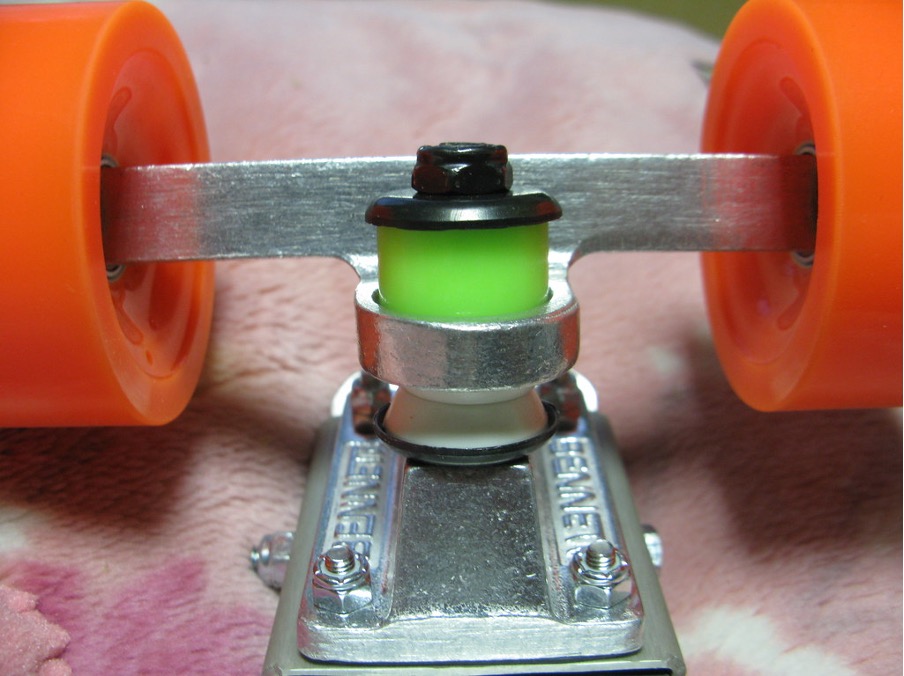
How To Prevent Longboard Wheel Bite?
If you experience this issue, you can consider the following solutions:
Add Riser Pads
Riser pads are necessary for skate wheels with diameters greater than 56mm. They’re also the most effective approach to avoiding this problem.
Riser pads are hard plastic or rubber pieces that provide more space between the wheels and the deck. So, they enable sharper twisting.
The use of riser pads helps minimize pressure fractures caused by forceful impacts.
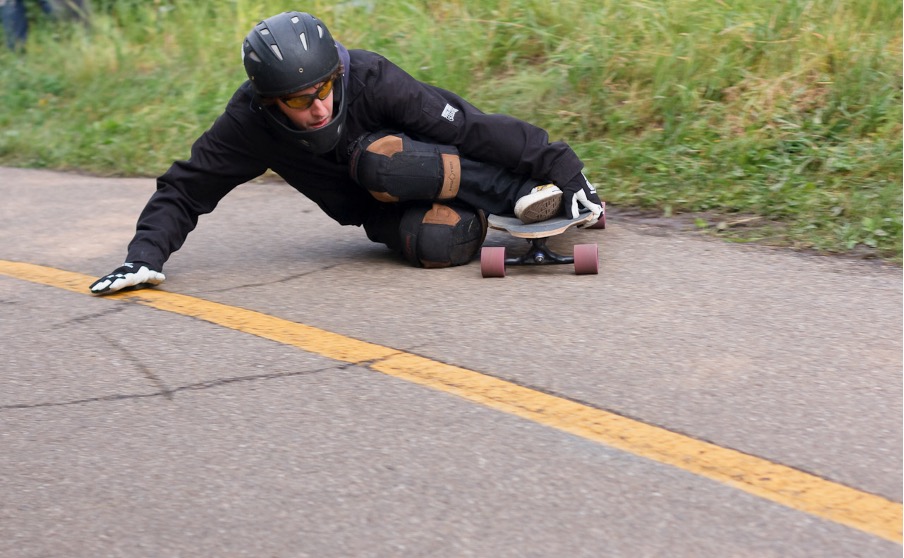
Get New Bushings
If adjusting your longboard trucks isn’t working, try replacing the bushings. Bushings that can support your weight are the greatest.
This issue is common if the skaters are too overweight for the skateboard setup. So, a heavier skater requires stiffer bushings.
Remember that bushings lose their effectiveness with time. It’s especially true if you’re an overweight skater.
When altering the tightness no longer works, purchasing a new bushing is time. If you plan to buy these components, you can watch this video:
Tighten The Trucks On Your Skateboard
This problem is common with loose trucks. Adjusting the tension of the longboard trucks is among the simplest ways to avoid this problem.
However, this strategy reduces the responsiveness of your skateboard.
When you turn, it will strengthen the trucks’ resistance. It may feel tight at first, but you’ll get the hang of it with practice.
This way doesn’t always fix the problem, which worn bushings or the truck type might trigger.
In this scenario, you may either replace the existing bushings or acquire firmer ones. If these components are cracked, it’s time to replace them.
Bushings are inexpensive, and there are various choices available to help you enhance your skating skills.
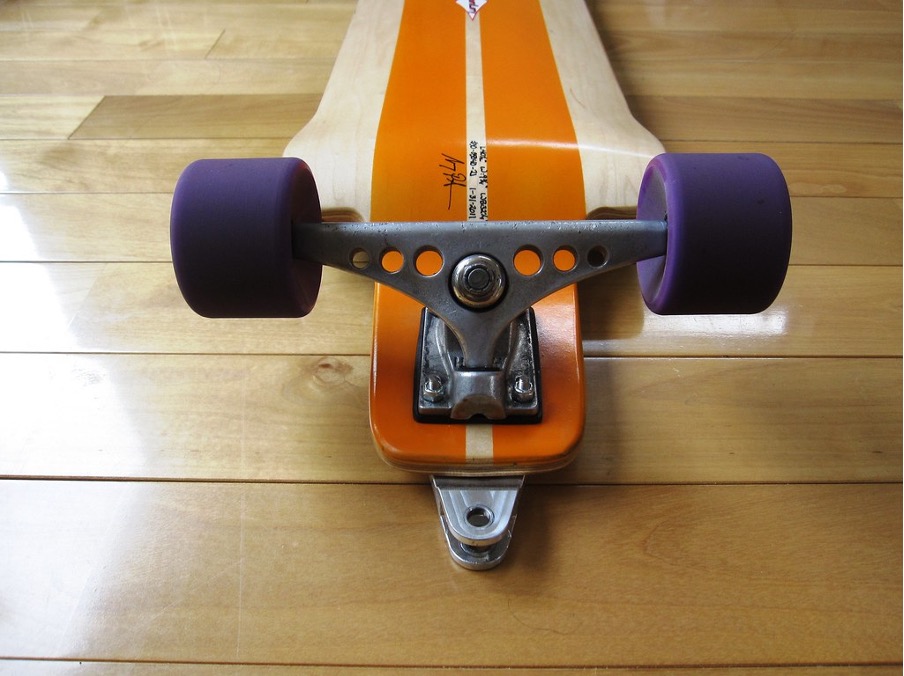
Purchase Smaller Wheels
The wheels may be too large, resulting in insufficient space between the deck and the wheels.
This issue may occur when riding 60mm wheels while you don’t use riser pads.
Consider getting a new pair of wheels, ideally around 50mm to 54mm in diameter.
Smaller wheels have a variety of effects on performance. They are not the most excellent choice for cruising.
These components reduce the risk of this skating problem but move slowly and lose speed more rapidly.
When this phenomenon becomes a concern for flat ground and technical street skaters, smaller wheels will be a good choice.
Invest In A Deck That Includes Wheel Wells
Wheel wells let you lessen the board to the pavement without replacing the wheels or adding riser pads.
You will not have to give up control and stability in this manner. You will have better stability due to the reduced gravity.
These accessories are a bit of a throwback, but they’re still popular on larger configurations and longboards and cruisers.
A deck with wheel wells is an excellent option for people who love to carve or cruise but is not suitable for flat terrain or street skating.
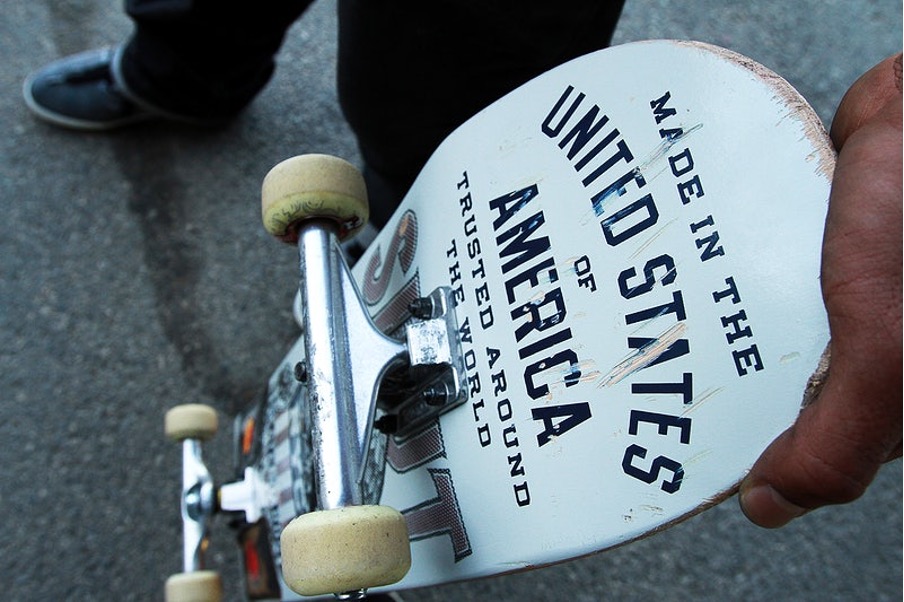
The Bottom Line
After reading this article, have you learned how to prevent longboard wheel bite? Hopefully, your answer will be yes.
This problem is common in skating. You should detect this problem before it happens by paying close attention to how the board turns whenever you ride.
You can add riser pads, get new bushings, tighten the trucks, invest in smaller wheels, or buy a deck with wheel wells if you have this issue.
If you know other ways, share in the comment below. Thanks for reading, and see you in the next post!




